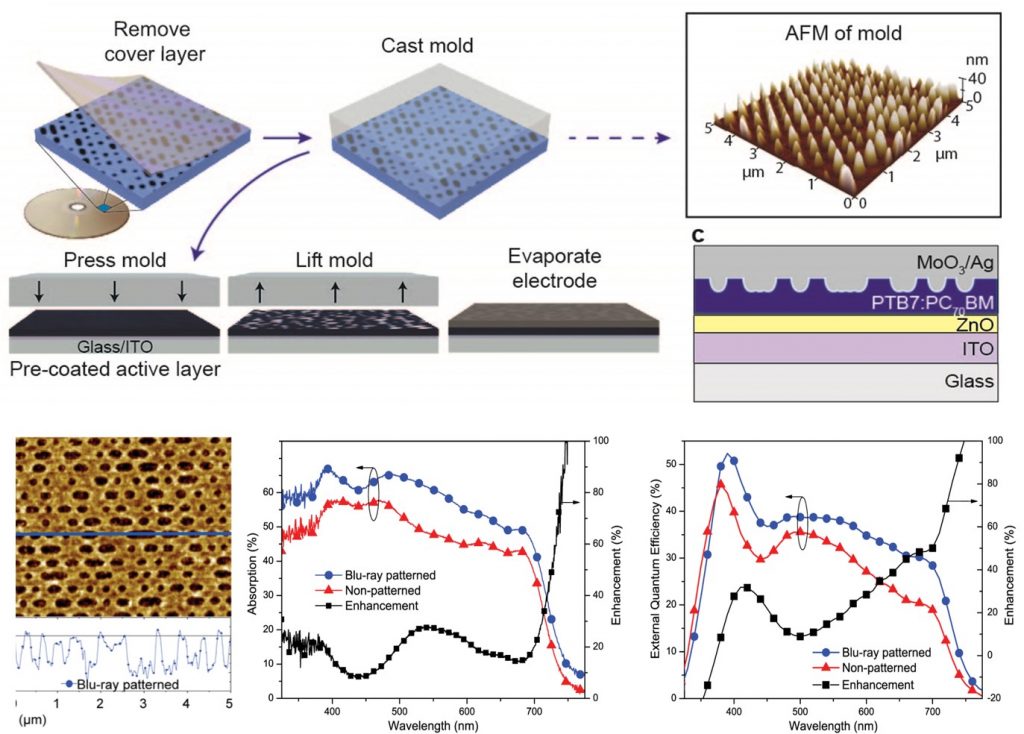Physical functions of information-bearing patterns
We have uncovered a unique connection between the optical properties of information-bearing nanopatterns (e.g., a Blu-ray movie disk), and the way the information is written. This leads to a new hypothesis connecting the physical world and the information space through data processing algorithms.
We discovered that information processing algorithms, which are originally designed to optimize data storage and reading, can be potentially repurposed to tailor the physical functions of data storage media. In the first example, through collaboration with Profs. Cheng Sun (ME) and Dongning Guo (EECS), we discovered that Blu-ray media discs have universally quasi-random nanopatterns (i.e., the islands and pits corresponding to 0’s and 1’s) that are surprisingly well suited for light-trapping applications in solar cells. While the Blu-ray algorithms were designed to optimize data compression, error tolerance and power consumption, they record the information in a form of islands and pits on the final discs with feature sizes and quasi-random arrangement that are nearly optimized for photon management over the solar spectrum, regardless of the information stored on the discs.

Blu-ray movie patterns for broadband light trapping in solar cells
This opens up the possibility to use information theory to guide nanopattern design, leveraging the infrastructure and nanomanufacturing capabilities of optical disc industry. It also inspires a number of new early concepts, such as dynamic interactions between the physical world (e.g., material platform for information storage) and the information space (e.g., content and processing algorithms).

All Blu-ray patterns have similar Fourier transforms, regardless of the disc content.
Incidentally, the first Blu-ray movie used in our experiment was Jackie Chan’s “Super Cop 3”.
Also see/listen/watch:
- C&E News: Cheap Templates For Solar Cells Now On Blu-Ray
- Nature: Blu-ray patterns pump up solar cells
- News Atlas: Blu-ray discs could help make better solar cells
- PBS News Hour: Using Blu-ray discs to improve solar cell technology
- The Washington Post: Old Blu-ray disks could help make better solar panels
- The Register: Boffins find Jackie Chan’s SUPERCOP is good for something
- Scientific America: Movies Can Boost Solar Power
- Newsy: Blu-Ray Discs Getting Second Run …
- NPR: How to make everything (Episode 176, including an interview with Prof. Huang)